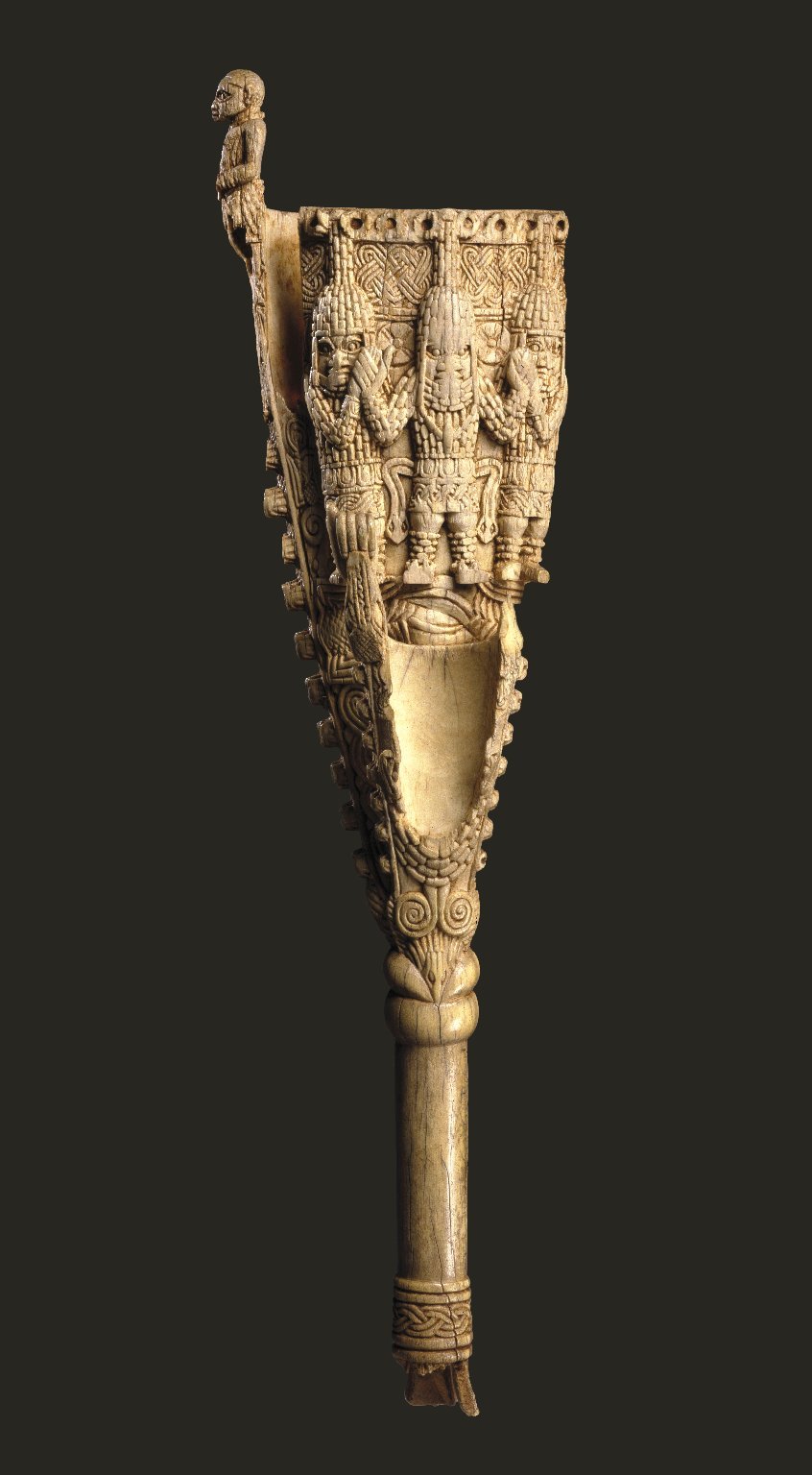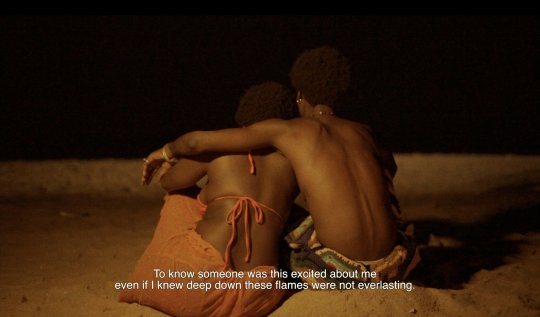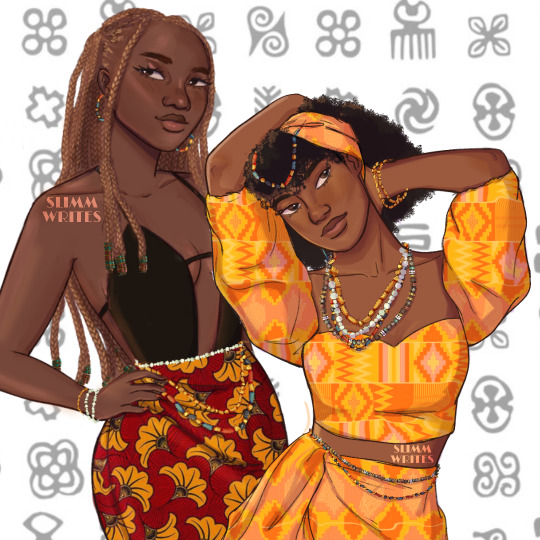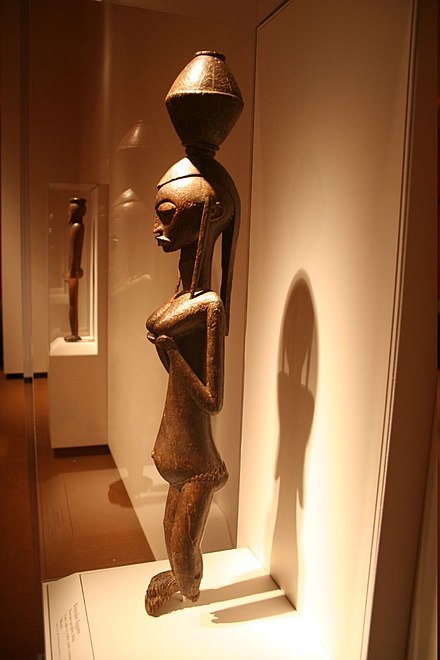#west African art
Explore tagged Tumblr posts
Text
#MetalMonday :



Akan weights in the form of mudfish
Ghana / Côte d'Ivoire, 18-19th c.
Copper alloy
On display at National Museum of African Art, Smithsonian Institution
Symbols of: wealth, power, transformation, resilience
Copper alloy
“Visually, [Akan] weights fall into two distinct categories: geometric and figurative. Stylistically they are divided into early (c. 1400-1700) and late (c. 1700-1900) periods. During the late period, figurative weights increased in both number and variety, although geometric weights were still made. Generally, late-period figurative weights have added details and textures beyond the basic form that would identify the subject.”
“Some weights’ forms were selected just for their beauty or to display the owner’s status. Many, however, evoke Akan proverbs, whose meanings vary with time and place—more than one interpretation can apply. Hence water creatures were popular weights, with their associations of fluidity, flexibility, and movement between worlds.”
“Th[ese] weight[s] [are] in the form of mudfish, a symbol of wealth and transformation. The mudfish lives when ordinary animals would die, surviving the loss of water.”
(Info via NMAA)
#animals in art#19th century art#museum visit#18th century art#Akan art#weight#metalwork#fish#mudfish#animal iconography#African art#West African art#Metal Monday#sculpture#figure#National Museum of African Art#copper
59 notes
·
View notes
Text

Ivory double bell (egogo) from the Benin kingdom in present-day Edo State, Nigeria, depicting the oba (king) with his arms upheld by two attendants, possibly high priests. The oba wielded the egogo during the Emobo rite that concluded the Igue festival, using its sound to repel troublesome spirits. Artist unknown; early 16th century. Now in the Brooklyn Museum. Photo credit: Brooklyn Museum.
#art#art history#Africa#African#African art#West Africa#West African#West African art#Nigeria#Nigerian art#Kingdom of Benin#Benin art#sculpture#ivory#ivory carving#African religions#16th century art#Brooklyn Museum
159 notes
·
View notes
Text

Mask (n'tomo)
C. 1930
Africa, West Africa, Mali, Bamana-style or Malinke-style blacksmith-carver
Wood, aluminum, copper alloy, animal hair, and steel
18 notes
·
View notes
Text
The Symbolic Significance of Carved Leopards in the Kingdom of Benin
The Kingdom of Benin, located in present-day Nigeria, is renowned for its exquisite craftsmanship, particularly in the realm of carved artifacts. Among the most striking and symbolic pieces produced in the kingdom are the carved leopards, which offer a fascinating glimpse into the cultural and artistic significance of the era. These intricately carved leopards, crafted from ivory and adorned…

View On WordPress
#African Art#African artifact#African History#Benin artisans#Benin History#Carved Leopards#Unveiling the Symbolic Significance and Political Influence of Carved Leopards in the Kingdom of Benin#west african art#West African sculpture
8 notes
·
View notes
Text
2 notes
·
View notes
Text
Is there any pre-colonial West African drawing styles? I know about sculpting and textiles but I’m looking for drawing/painting specifically. Also y’all got any book suggestions for West African Vodun and Bakongo religion specifically?
#west africa#West African Art#West African Art History#West African History#african history#african american history#west african vodun#vodun
1 note
·
View note
Text
Beautiful African smile and 🤭 ass are dancing in Nigeria
#african beauty#african women#dark skin beauty#afro sexy#african smile#nigerian#african style#curls#west africa#african girl#african art#african music#african culture#african dance
303 notes
·
View notes
Text


#africa#african#african aesthetic#black girl aesthetic#black girl beauty#black girl luxury#black girl magic#black girls of tumblr#black tumblr#black woman appreciation#black woman aesthetic#girly aesthetic#tumblr aesthetic#aesthetic#moodboard#black woman beauty#black femininity#henna art#black woman in luxury#just girly things#luxury black women#coquette#this is a girlblog#girlhood#black beauty#black woman femininity#girlblogging#it girl#black women#west africa
367 notes
·
View notes
Text


I Thought About You Today
A short film by Ask
#black tumblr#blackout#africa#african#ghana#black out#darkskyn#melanin#ghanaian#black girl#black love#black couple#black couples#afrotastic#afro#west africa#afrikan beauty#liberian#liberia#short film#film stills#film photography#film#film screencaps#film screenshots#film scenes#videography#filmography#art#lovers
242 notes
·
View notes
Text
Was told the art I'll share on here will get more engagement than it ever did/will on Twitter, so I'm bringing my best work forward and sharing this piece I made of beautiful african women🫣🎨🤎

#twitter#twitter refugees#artwork#black artist#african art#digitalillustration#clip studio paint#support artists#adinkra symbols#ghanaian#black women#affirmative action#west africa#digital art#artists on tumblr
850 notes
·
View notes
Text

"Le miel d'Oshun", acrylic on paper, 21 x 29,7 cm
Instagram : @jenekacy_art
#oshungoddess#oshun#oshunenergy#acrylicpainting#illustration#acrylicillustration#witches of color#santeria#africanart#ifa#west africa#yoruba#candomble#my art#contemporary art#hoodoo#honey#love goddess#afrofantasy#afro witch#africanspirituality#african traditional religions#african spirituality#oxum
74 notes
·
View notes
Text

Weight (abrammuo) of a porcupine (kotoko)
Akan artist, Ashanti Region, Ghana, 18th - 19th c.
Copper alloy; H x W x D: 4.8 x 3.8 x 7.6 cm (1 7/8 x 1 1/2 x 3 in.)
On display at National Museum of African Art, Smithsonian Institution 96-42-3
<Some figurative weights evoke well-known Akan proverbs, and more than one proverb may apply. This is perhaps particularly true of animal weights. This weight depicting a porcupine (kotoko) relates to a proverb of the Anyi of Côte d'Ivoire in which the porcupine displays greater responsibility than his dependent relative, the hedgehog. The porcupine is cast in the role of the senior, powerful character because of its quills. Its many quills were also taken as a symbol of the Asante kingdom and its large, well-equipped army, as demonstrated in the sayings "Asante kotoko kill thousands and thousands more will come," an expression relating to the size and courage of the army, or "who dares to attack the porcupine which has so many spikes."
Most weights, however, are not commissioned to make a point or tell a story. They are not usually sent as messages, with the exception of an occasion on which an Asante king once dispatched a large weight in the form of a porcupine to indicate the size of a fine owed by a guilty individual.<
https://collections.si.edu/search/detail/edanmdm:nmafa_96-42-3
#animals in art#19th century art#museum visit#18th century art#African art#Akan art#West African art#copper#metalwork#sculpture#weight#figure#animal effigy#porcupine#animal iconography#National Museum of African Art#Smithsonian Institution
22 notes
·
View notes
Text

Container
c. 1920
Africa, West Africa, Nigeria, possibly Oyo region,
Yorùbá-style carver
Wood, paint, and iron alloy
2 notes
·
View notes
Text
Bambara Human Figure, Late 19th to Early 20th Century, Mali.
The Bamana people, an integral part of the Mandé ethno-linguistic group, boast a rich and intricate history that stretches back centuries. Originating as a royal segment of the Mandinka people, the Bamana played a vital role in shaping the Mali Empire during the 13th Century. However, their roots within the Mandé group date back even further, with divergence dating back an impressive 7,000…

View On WordPress
#African Art#African artifact#African History#Art#Bambara Human Figure#sculpture#West African#west african art
1 note
·
View note
Text
Sculpture of a Woman with Four Children, from Mali, c.1100-1450 CE: this sculpture was created in the ancient city of Djenné-Djenno

Created during the 12th-15th centuries CE, this sculpture depicts a woman sitting cross-legged on the ground, with two children on her lap and two more clinging to her back. Scarification patterns are visible on the woman's temples, and there is a thick, undulating line running from her forehead to the nape of her neck, likely representing a serpent.

As this article explains:
Snakes on Inner Niger Delta sculptures are a common element and should be seen as a positive iconographic component. They represent control of a potentially dangerous benevolent power that must be tamed, domesticated, nourished, and satisfied so it will continue to provide protection.
This is one of the many terracotta sculptures that were produced in Djenné-Djenno, located in the Niger River Valley of Mali, in West Africa; Djenné-Djenno sits just to the south of the Medieval city of Djenné, which is still a major center of Islamic scholarship.

The ancient city of Djenné-Djenno dates back to at least 250 BCE, making it one of the oldest cities in West Africa. For centuries, it also served as one of the largest urban centers/trading hubs in the region, with a peak population of about 20,000 people. The city began to decline in the 9th century CE, when residents (and trade) began moving northward to the nearby city of Djenné, which had just recently been founded by Muslim traders. Djenné-Djenno was ultimately abandoned by the end of the 15th century.
Unfortunately (and unsurprisingly), most of the artifacts from Djenné-Djenno were looted or destroyed by colonizing forces during the 19th-20th centuries. Some of those artifacts have been repatriated in recent years, and there are ongoing efforts to return more of them.
Why Western museums should return African artifacts.
Sources & More Info:
Yale University Art Gallery: Female Figure with Four Children
World History Encyclopedia: Djenné-Djenno
Tribal Art: Scrofulous Sogolon (PDF)
ArtNews: Museum of Fine Arts Boston to Return Terra-Cotta Figures from Mali in Latest Restitution Efforts
CBS: African Nations Want their Stolen History Back, and Experts Say it's Time to Speed up the Process
Fair Observer: It is Now Time for the West to Return African Art
#archaeology#artifact#history#anthropology#dogon#djenne-djenno#mali#west africa#medieval art#sculpture#art#motherhood#children#djenne#african art#african history#repatriation#inner niger valley#terracotta#conservation#timbuktu
45 notes
·
View notes
Text

A friendly(..?) spider greets you~!
He's inspired by Anansi :)
#my art#artists on tumblr#digital art#art#illustration#original character#oc#character design#anansi#africa#west africa#drawing#african#african culture#ghana#fantasy#anansi I love you
80 notes
·
View notes